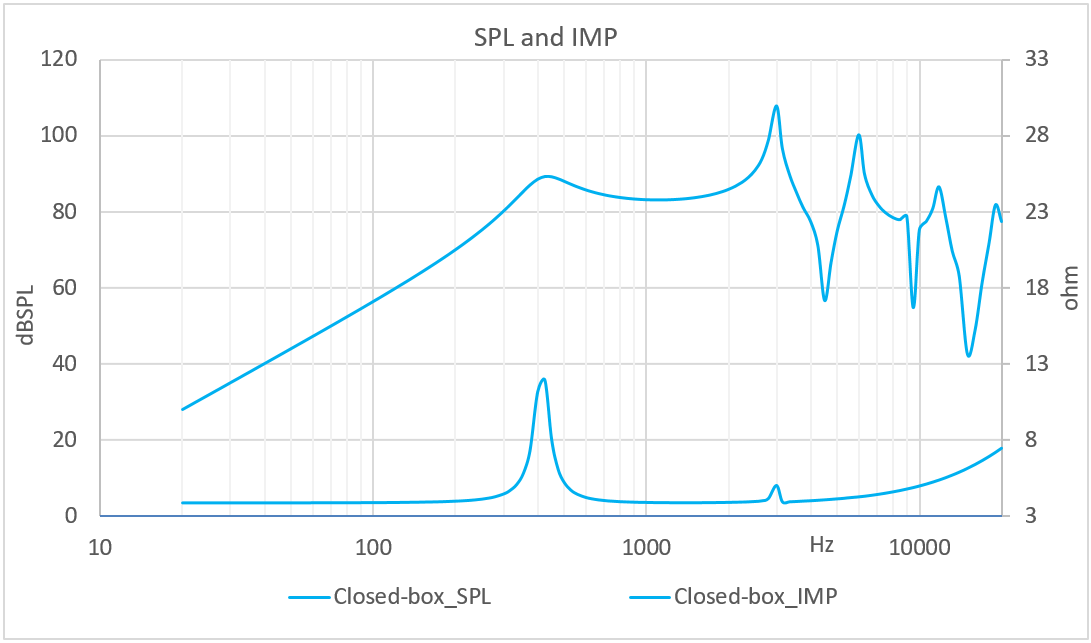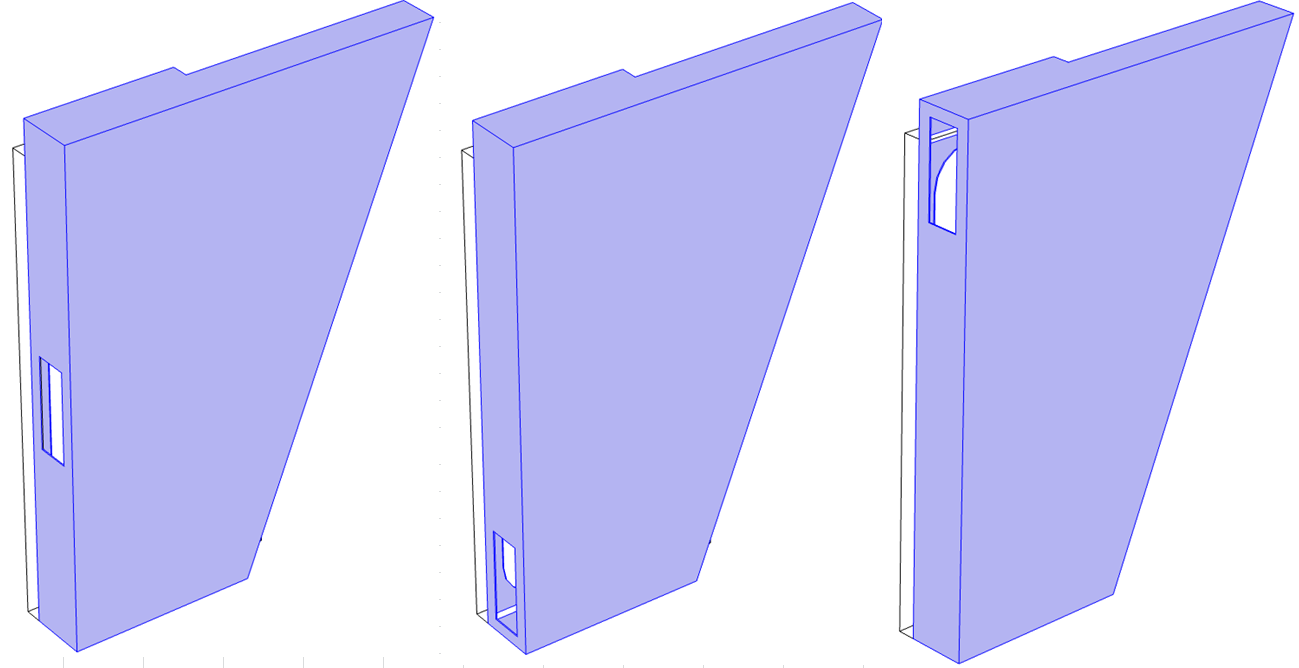Optimizing Leakages
Virtual reality attracts people’s attention again, and Metaverse has recently become a hot topic. Acoustic designs for a virtual reality device usually involve pressure or near-field acoustics. Here is an example of a near-field acoustic that reveals how to extend the bass for such a small speaker by designing the proper leakages in its enclosure.

The speaker designed for a virtual reality device is originally a closed box with side-radiation architecture.

The distance for the simulated S.P.L. is a near field of 5 centimeters, which refers to the distance between the ear and the sound-radiating area of the speaker. The simulation results show the in-box resonant frequency is 425Hz.

The 3D drawing is modified to relatively simple geometry to speed up the calculations, but the key points are kept to ensure that all results are valuable. There are four leaking areas in which to participate in the experiments.

The leakage at No.2 can extend the Fc to 190Hz, but the frequency response has severe cancellations that cause the S.P.L. to decrease significantly.

Compared with four leaking areas, No.1 and 3 leakages have better frequency responses and less cancellation.

If we investigate the impact on the different leaking areas on the same side further, the simulation results show that there is not too much impact on the sound performance.

The bass can extend in near-field conditions by designing the optimized leakages on the enclosure. All experiments can be built with a finite element analysis tool. Kingstate uses COMSOL multiphysics to predict in advance and decide on the best design before making an actual sample. It saves time and costs.

Check next: Receiving path Fr simulation.

 RFQ
RFQ